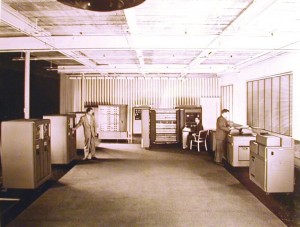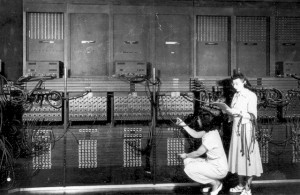Computers
SEAC Machine Dedicated
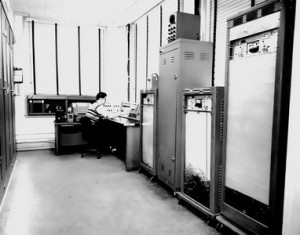
The National Bureau of Standards dedicated the SEAC (Standards Eastern Automatic Computer) in Washington. The SEAC was the first computer to use all-diode logic, a technology more reliable than vacuum tubes, and was the first stored-program computer completed in the United States. Magnetic tape in the external storage units stored programming information, coded subroutines, numerical data, and output.
IBM is Incorporated as CTR

The Computing – Tabulating – Recording Co. (C-T-R), a consolidation of the Computing Scale Co. of America, The Tabulating Machine Co., and The International Time Recording Co. is incorporated in New York. In 1924, C-T-R adopted the name International Business Machines, better known as IBM.
Charles Babbage Unveils Difference Engine
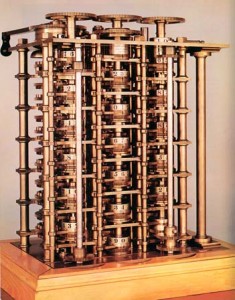
In a paper to the Royal Astronomical Society, Charles Babbage unveils his design for a machine he called the Difference Engine, the first example of a mechanical computing machine. The British government funded the building of a Difference Engine, which Babbage never actually completed. However, Babbage’s design for the Difference Engine and his later Analytical Engine spurred future designs of working mechanical computers. In 1991 a working Difference Engine was constructed using Babbage’s plans, proving that his designs would have worked.
One Processor to Rule Them All
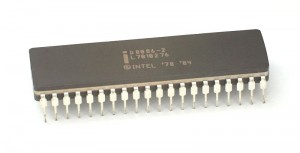
Intel introduces the 16-bit 8086 processor with clock speeds of 10, 8, and 5 MHz. The 8086 would become the basis for the series of processors used in “IBM Compatible” PCs and the x86 family (later marketed under the name “Pentium”) that would dominate the market in the PC era. Ironically, however, it was the modified 8-bit 8088 processor that was used in the original IBM PC, primarily due to factors that would reduce overall cost. The current line of Intel “Core” processors are still based on the same architecture that was introduced with the 8086.
Really Geeky Modem Technology Patented
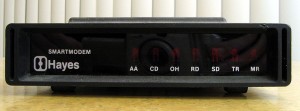
Michael Eaton is granted a patent for the AT Command Set for Modems, which had created a standard language for interacting with modems. Two years earlier, the rights for this command set were purchased by the Hayes Corporation and incorporated into the Hayes Smartmodem 300 as the “Hayes Command Set.” The protocol will become an industry standard used for years to come.
In the early 90’s, needing to use modems so that I could connect to pre-Internet bulletin board systems, I learned the AT command set. I then used and supported modems extensively for about 15 years, and occasionally still do. Because I worked with modems so much, I used to be able to speak the AT command set in my sleep. I know, it impresses the ladies.
The Mac Gets Intel Inside
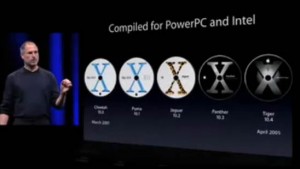
In a keynote address at Apple’s Worldwide Developers Conference, Steve Jobs announces that Macintosh computers will transition from PowerPC to Intel processors and demonstrates Mac OS X running on a computer with an Intel Pentium 4 processor. Jobs revealed at the time that Apple had been secretly preparing for a possible transition to Intel for many years. Unbeknownst to the public, for every version of Mac OS X released, Apple actually had prepared a version running on an Intel processor. By making the transition to Intel, Apple paved the way for the resurgence of the Macintosh computer by making it more compatible with software for Microsoft Windows.
The Apple II Enters the Market
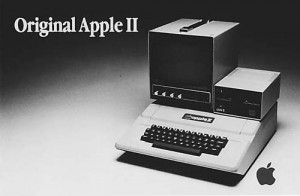
The original Apple II computer goes on sale. The Apple II featured an a 1MHz MOS 6502 processor, an integrated keyboard, a built-in BASIC programming environment, expandable memory (4K expandable to 48K), a monitor capable of color graphics, a sound card, and eight expansion slots. To include all these features in one discrete unit was highly innovative and the reason it is considered the first practical personal computer. However, in the spirit of the original computer hacker, the Apple II was also available as a circuit-board only, without keyboard, power supply, or case. A couple of years later, the combination of the Apple II series and the first “killer app” of the business world, the VisiCalc spreadsheet program, popularizes personal computers among business users. This sudden success of the “home computer” in the business world surprises established technology companies and eventually leads IBM to scramble to develop their IBM PC.
GIF is Not Peanut Butter
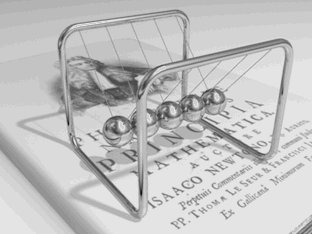
CompuServe releases the Graphics Interchange Format (GIF) standard as a new computer graphics file format. Due to color limitations, the GIF format is unsuitable for reproducing color photographs, but it is well-suited for more simple images such as graphics or logos with solid areas of color. This made it probably the most popular graphics format for the early Internet, until the famous “GIF licensing controversy” soured many designers to its use. The PNG format was developed in response as an alternative to GIF to get around the licensing issues. However, all relevant patents have since expired and the GIF format may now be freely used. Today it still sees widespread use, especially when simple animations are needed.
IBM Announces the “Defense Calculator”, Model 701
May 21, 1952
The IBM 701 was the company’s first commercial scientific computer, but I guess they figured that calling it a “calculator” would help it sell better. Perhaps they were right, because only expecting to sell five, the company ended up selling nineteen to government, large companies, and universities.
Contract Signed to Create ENIAC
The US Army and the University of Pennsylvania sign a contract to develop ENIAC, which would become the world’s first fully electronic computer, making the use of vacuum tubes rather than electromagnetic switches. The Army wanted to use this computer to calculate ballistic firing tables in World War II. However, ENIAC was not completed until after the war was over and went on to solve complex mathematical problems in fields such as atomic energy and rocketry.

